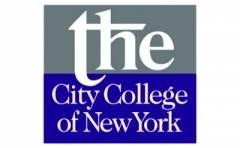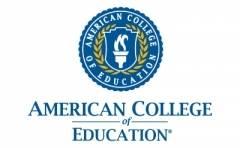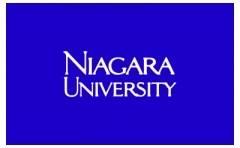Best TESOL, ESL and Bilingual colleges in the U.S.
Does long-term travel or teaching English inspire you? If so, welcome to the life of an ESL teacher! Teaching English as a Second Language (ESL) or Foreign Language (EFL) is a fun and challenging way to find work in your home country or while living abroad.
Though the ESL acronym is broadly used, ESL actually refers to teaching English to non-native speakers within an English language-dominant country such as the US or UK.
By contrast, EFL refers to teaching English in a non-English-speaking country (aka “abroad” or “overseas”).
There are teaching opportunities all over the world with an estimated 1.5 billion1 English language learners out there waiting for you.
Best TESOL, ESL and Bilingual colleges in the U.S. for 2025
Western Oregon University offers 7 TESOL, ESL and Bilingual degree programs. It's a small, public, four-year university in a outlying town. In 2022, 24 TESOL, ESL and Bilingual students graduated with students earning 20 Certificates, and 4 Master's degrees.
CUNY Queens College offers 7 TESOL, ESL and Bilingual degree programs. It's a large, public, four-year university in a large city. In 2022, 129 TESOL, ESL and Bilingual students graduated with students earning 54 Certificates, 50 Master's degrees, and 25 Bachelor's degrees.
CUNY City College offers 7 TESOL, ESL and Bilingual degree programs. It's a large, public, four-year university in a large city. In 2022, 139 TESOL, ESL and Bilingual students graduated with students earning 98 Master's degrees, 34 Bachelor's degrees, and 7 Certificates.
Kent State University at Kent offers 7 TESOL, ESL and Bilingual degree programs. It's a very large, public, four-year university in a large suburb. In 2022, 39 TESOL, ESL and Bilingual students graduated with students earning 18 Certificates, 13 Bachelor's degrees, and 8 Master's degrees.
Teachers College at Columbia University offers 6 TESOL, ESL and Bilingual degree programs. It's a small, private not-for-profit, four-year university in a large city. In 2022, 146 TESOL, ESL and Bilingual students graduated with students earning 138 Master's degrees, and 8 Doctoral degrees.
American College of Education offers 12 TESOL, ESL and Bilingual degree programs. It's a large, private for-profit, four-year university in a large city. In 2022, 347 TESOL, ESL and Bilingual students graduated with students earning 223 Master's degrees, and 124 Certificates.
Hamline University offers 7 TESOL, ESL and Bilingual degree programs. It's a small, private not-for-profit, four-year university in a large city. In 2022, 75 TESOL, ESL and Bilingual students graduated with students earning 46 Master's degrees, and 29 Certificates.
Georgia State University offers 5 TESOL, ESL and Bilingual degree programs. It's a very large, public, four-year university in a large city. In 2022, 84 TESOL, ESL and Bilingual students graduated with students earning 60 Certificates, 20 Master's degrees, and 4 Doctoral degrees.
Niagara University offers 5 TESOL, ESL and Bilingual degree programs. It's a small, private not-for-profit, four-year university in a large suburb. In 2022, 6 TESOL, ESL and Bilingual students graduated with students earning 4 Bachelor's degrees, and 2 Master's degrees.
The University of Texas at San Antonio offers 6 TESOL, ESL and Bilingual degree programs. It's a very large, public, four-year university in a large city. In 2022, 69 TESOL, ESL and Bilingual students graduated with students earning 42 Bachelor's degrees, 23 Master's degrees, and 4 Certificates.
Top schools offering TESOL, ESL and Bilingual degrees in the U.S.
TESOL, ESL and Bilingual
- Teaching English As a Second or Foreign Language/Esl Language Instructor Schools
- Bilingual and Multilingual Education Schools
- International and Comparative Education Schools
- Bilingual, Multilingual, and Multicultural Education Schools
- Teaching English or French As a Second or Foreign Language Schools
What is TESOL, ESL and Bilingual?
What, specifically, is teaching English as a second or foreign language? It’s about as straightforward as it sounds. There are people all over the world who want to learn English, but they need trained teachers to help them learn the language.
Immigrants from a non-English speaking country to a primarily English-speaking country can significantly benefit from picking up English as a second (or third or fourth) language. They simply need an English teacher.
Meanwhile, those living outside of a non-English speaking country (i.e., “abroad” or “overseas”) might also want to study English as a foreign language, either as a hobby or as part of their academic education or career development.
As the world becomes increasingly globalized, English continues to dominate as a universal language of choice in both business and academia. The demand for ESL/EFL teachers remains high, with many schools willing to pay a decent salary and basic living expenses. It’s an incredible opportunity for anyone who loves to travel but needs a job to make living abroad possible.
Master's Degree in TESOL, ESL and Bilingual
Typically, professionals with a master’s in ESL spend their time in the classroom. While many work with children in K-12, others teach at community colleges or other community organizations that provide services to non-native speakers.
Also, combined with years of experience, this degree can also be used to design curriculum and write textbooks for other ESL teachers. Others have used the degree to work as an ESL program director, school administrator, or researcher.
A master’s in ESL is typically a two-year program that focuses on designing and implementing curriculum for students learning English. Students will focus on the following:
- Childhood education
- Adult education
- Curriculum development
- Teaching English as a foreign language (TEFL)
- Navigating cultural differences
- Helping students acclimate to a new environment
- Incorporate technology in the classroom
Many students enter a master’s in ESL program with a bachelor’s degree, teaching certification, and classroom experience, and students can expect to spend two years completing their degree. Ultimately, earning a master’s in ESL increases earning potential and opens the door to additional leadership opportunities.
Types of Master’s in ESL/ELL Degrees
Here are some different specialties that students can pursue with a master’s in ESL:
- TESL – Teaching K-12 students in English-speaking communities
- ESOL – Teaching English to adults
- TEFL – Teaching abroad in countries where English is not the primary language
Courses in Master’s in ESL/ELL Programs
Coursework will vary according to specializations. For example, TEFL students may take more classes in cultural concepts so they are better prepared to work in a foreign country. Regardless of concentration, there are certain core classes that can be expected.
- Cross-Cultural Studies – ESL students come from various backgrounds and countries. It is important to be aware of the cultural norms of their students. This helps instructors avoid being disrespectful or offensive.
- Teaching Methods for ESL – With a focus on the historical and theoretical elements of ESL, students learn effective teaching methods and best practices for incorporating technology in the classroom. Lesson plan design and implementation are also on the curriculum.
- Sociolinguistics – This course looks at the connection between language and society. Students learn about different accents and dialects to better understand the social implications of language.
- Second Language Acquisition – This course class examines the process of how people learn a second language. You’ll study different factors that influence the learning process and how to teach a variety of students.
How Long Does it Take to Get a Master’s in ESL/ELL Degree?
Typically, a master’s in ESL program requires the completion of 30-40 credit hours, which takes about two years. There are part-time or accelerated programs available for those who want to continue working while they study. It is important to keep in mind that most programs require a bachelor’s, teaching certification, and some classroom experience.
- I have a BA in Education. If you have already completed your undergraduate degree and received a teaching certification, a MA in ESL will take 15-24 months with a full course load.
- I have a BA in an unrelated field. If you have a BA in another field, you will need to work with your program to earn a teaching certificate. This will prolong the amount of time it takes to earn a MA in ESL.
- I have a BA in Education and want to work while taking classes. If you enroll in a part-time program, it can take 3-4 years to earn your degree.
- I don’t have a BA. Earning a BA in education and a teaching certificate typically takes five years with a full course load. Then, you can expect to spend about two years completing your MA in ESL.
Skills Learned in a Master’s in ESL/ELL Program
You can expect to learn the following how-to skills during a master’s in ESL program:
- Bridge cultural gaps
- Lead classrooms
- Understand ESL pedagogy
- Design and implement curriculum
- And much more
These skills are helpful both in the classroom and beyond as all industries become more globalized.
As a result, a master’s in ESL is a great degree for those who want to work in the classroom or professionals wanting to take their skills into the community and business world.
Master’s in ESL/ELL Specializations
Fortunately, master’s in ESL programs provide opportunities for students to pursue their interests and specialize in different areas. Here are just a few examples:
| Specialization | Description | Potential Career Paths |
| Adult Education | This is an instructional position that works with adult learners to help them master the English language and learn about cultural differences. Students come from a variety of backgrounds. | Typically, this specialization works in community colleges and other higher education institutions. Professionals can also work at community organizations and become department heads. |
| Curriculum Development | Students will learn how to design curriculum to support ESL programs. This includes learning best practices for using technology in the classroom. | With this specialization, students are well positioned for leadership positions at a variety of educational institutions and other programs. They can also work for textbook publishers and other producers of educational materials. |
| K-12 | ESL students learn about the needs of students in the age group and how to best instruct them in learning English. | K-12 instructors can become principals and superintendents. |
Applying to Master’s in ESL/ELL Degree Programs
Candidates will need to gather a variety of materials to apply to ESL programs. Common requirements include:
- Transcripts
- Application
- Letters of recommendation
- Application fee
- Graduate Record Examination (GRE), applicable for some schools
- Essay, applicable for some schools
Every school may be a little different, so it is important to pay attention to the details to ensure everything is in place before sending off an application.
Admissions Requirements for Master’s in ESL/ELL Programs
Admissions requirements can vary, but most programs will require:
- Bachelor’s degree – A BA in education is preferable but may not be a required.
- Teaching certificate – Some schools allow students to earn their certificate during the master’s process.
- Teaching experience – Having a BA in education and some teaching experience will significantly improve a candidate’s chances of gaining admission.
- Some experience with a second language – Again, this isn’t always the case, but it can make applications stronger.
How Much Does a Master’s in ESL/ELL Degree Cost?
Typically, programs will charge by the credit hour, and each credit can cost between $400- $750. That means a full-time student can expect to pay $6,000-$12,000 per academic year at a public university.
Students can also expect to pay certain student fees and hundreds of dollars on textbooks. On-campus students should be prepared for expenses like parking permits, student association dues, and other fees associated with access to resources and technology.
What Can I Do with a Degree in TESOL, ESL and Bilingual?
Earning an ESL/ELL degree is an affordable and rewarding way to expand career opportunities and positively affect the education of children and adults. An ESL instructor is responsible for helping students improve their English skills and navigate the curriculum from other courses.
This degree can be used on various audiences:
- Primary school students
- Adults in community colleges
- Other community organizations
- Students abroad
ESL is one field with a huge gap in demand and supply. In fact, there is only one ESL teacher for every 150 students learning English in the US.1
Earning an Online TESOL, ESL and Bilingual Degree
Schools across the country offer a variety of on-campus, online, and hybrid ESL programs. Some students enjoy the flexibility of studying online, which eliminates the need for a commute and allows them to attend schools in other states. On the other hand, the on-campus experience does offer certain social and networking opportunities.
Should I Complete Courses Online
Online courses can be a good option for people who want to continue working while they study. While some students prefer the in-person experience and small class sizes, accredited online programs offer the same quality of education and rely on the same faculty to teach courses. It really comes down to personal preferences and whether an on-campus program is feasible between work and family.
How Long do Online Courses Take to Complete?
Online programs vary by school. Certain programs host synchronous courses, conducted in real-time for a more in-person feel. This means you’ll be on a set schedule.
However, there are also asynchronous courses that require some self-discipline as they are completely pre-built and allow students to study at any time and at their own pace.
Students attending a school in their area may also have the option of a hybrid program with both online and classroom instruction. This can be one way to expedite the degree. There may also be the option of entering an accelerated online program.
It is important to understand what types of courses are offered with each program to better understand how quickly you can earn your degree. At the same time, schools may cap the length of time it takes to complete a degree. Full-time students typically take two years to earn a master’s in ESL, and some schools want part-time students to finish within four years.
TESOL, ESL and Bilingual Career and Salary Overview
Master’s in ESL/ELL Salaries
Salaries for teachers vary according to location and previous experience. However, those in urban areas tend to earn more. Typically, a master’s will raise the base salary anywhere from $5,000-$10,000.2 Those teaching K-12 and earning in the 50th-90th percentile can expect a salary that ranges from $60,000-$98,000. Taking on a leadership role will also reflect a boost in pay.
Master’s in ESL/ELL Job Projections
Despite the fact that there aren’t enough ESL teachers to meet the needs of students, projections are showing a 10% decline in job growth into 2029.3 At the same time, some schools are offering signing bonuses and other perks for ESL instructors.
While the field may not be exploding as a whole, there is a clear demand in certain areas of the country.
Master’s in ESL/ELL Career Paths
As mentioned above, most professionals with a master’s in ESL choose a career in teaching and work in the classroom with small groups of children or adults.
However, there are also opportunities for leadership positions and work outside academia. You could design a curriculum, write textbooks, or work in the community with different organizations. Earning a master’s can also open the door to principal positions.
| Career | Salary | Projected Job Growth (2020-2030) | About the Position |
| Curriculum Designers | $66,970 | 10% | An ESL curriculum designer is in charge of developing instructional materials and helping ESL students master English. |
| ESL Instructor | $55,350 | -5% | An ESL instructor spends their time in the classroom working with students. Daily tasks include designing materials, providing instruction, and giving feedback to parents and administrators. |
| Principal | $98,490 | 8% | Principals oversee all aspects of a school’s operations. This can range from maintaining facilities and teacher training to meeting with parents and school boards. |
| Parent and Community Liaison | $69,600 | 15% | People in this position coordinate and manage programs designed to support the community. |
What Does a Travel ESL Teacher Do?
Teaching English literature and rules of grammar to students who already know English might be challenging work, but teaching English as a Second or Foreign Language can be even more difficult. To be a successful EFL teacher, expect to start with the basics in your lesson plans, especially if teaching ESL abroad.
Here are some general daily duties of an EFL/ESL teacher:
- Assess current proficiency levels of students or general classrooms
- Create lesson plans
- Develop customized curriculum for students (For instance, young students may need general grammar and reading/writing skills, while business students may need to focus on verbal negotiations and professional vocabulary.)
- Teach lessons via one-on-one or group sessions
- Ensure classes cover all areas required for language acquisition, such as reading, writing, listening, and speaking
- Arrange fun breakout activities for students to practice together
- Listen and guide students as they practice
- Ask concept checking questions to ensure students understand lesson material
- Monitor for signs of unique learning obstacles, which can be harder to detect when when living abroad and teaching ESL or EFL to speakers of other languages
- Keep classrooms lively and engaged so students stay focused
- Teach good study techniques so students are empowered to work on their own
How Much Does an ESL Teacher Living and Teaching Abroad Make?
When it comes to salary, there are so many variables, so the income range is very wide. According to the Bureau of Labor Statistics, the median income for “Adult Basic and Secondary Education and ESL Teachers” is $55,350 (as of 2020), ranging from under $32,120 to over $95,630.2
Keep in mind, “ESL” typically refers to teaching in an English-speaking nation. So, an ESL teacher’s salary probably won’t be consistent with someone teaching abroad, who might make considerably less than even the lowest salary listed by BLS.
When teaching ESL abroad, you may earn wages in the local currency. And though it may seem like a low salary compared to peers in the US, your living costs while living and teaching abroad will likely be much lower. Let’s look at an example.
"You want to be an EFL teacher in Turkey and see a job post in Istanbul offering the equivalent of $1,000 usd per month. That doesn’t sound like very much money, but with the exchange rate, that $1,000 could equal 8,000 Turkish lira—enough to have a reasonable lifestyle in the city you work in."
How do you know how much is “enough?” There are many sites like Expatistan3 that break down the cost of living in various countries and cities.
As with any country, big cities can be vastly more expensive to live in than small towns. So when teaching overseas, it is critical to determine how much your salary would be worth in that country as well as the specific city, instead of comparing the salary to any US dollar standard.
Employers will consider many factors when it comes to salary, such as qualifications and years of experience. However, smaller schools might not be able to afford to pay over a certain amount regardless of education or experience. So, their offered salary is what it is, take it or leave it. Some jobs pay monthly salaries, while others offer hourly wages. Teaching young children might pay less than teaching older kids or adults, and classroom sizes can also impact your pay.
Steps to Becoming an ESL Teacher Abroad
Teaching ESL in the US may have very different requirements than teaching ESL/EFL abroad. For example, if you want to be an American K-12 public school ESL teacher, you’ll most likely need at least a bachelor’s degree and certification or licensure.
However, teaching EFL in a foreign country can be done in small private schools. Many of these employers only require an applicable Teaching English as a Foreign Language (TEFL) or Teaching English to Speakers of Other Languages (TESOL) certification as a minimum to apply!
Step One: Take a TESOL Certification
To teach outside of the United States, most ESL/EFL teachers obtain a Teaching English as a Foreign Language (TEFL) or Teaching English to Speakers of Other Languages (TESOL) certification. Numerous programs offer these TEFL/TESOL certifications, from community colleges, private companies in the US and abroad, and even universities.
Some offer fully online certificates,4 while others require live, in-person teaching practice. Prices for certifications range from hundreds to over $2,000.
Many teachers opt to complete the Certificate in English Language Teaching to Adults (CELTA), offered by Cambridge English (part of Cambridge Assessment, a non-teaching department of England’s University of Cambridge).5 As noted on their website,
“CELTA is the most widely recognised English teaching qualification in the world. It’s the qualification most often requested by employers; three out of four English language teaching jobs require a CELTA qualification.”
CELTA is arguably the hardest and perhaps most expensive TEFL/TESOL certification to obtain. For instance, one teacher completed their CELTA via a hybrid method through the International Training Institute in Istanbul, Turkey, one of the authorized CELTA training centers. First, they did the instructor-led online coursework at home then flew from Washington D.C. to Istanbul to complete the live teaching practice and assessment with students in the target country.
Step Two: Apply to a School
If you’re ready to start living abroad and teaching ESL, there are several job boards out there for finding good opportunities around the world. A few of the more popular ones include Teach Away, ESL Base, Transitions Abroad, and Dave’s ESL Cafe. As with any job posting, read everything very carefully. Take note of the job description, hard requirements, and salary/benefits listed (especially insurance or housing arrangements).
Step Three: Research the Countries
Please don’t skip these next two steps!
Sometimes ESL teachers are so eager to get overseas that they don’t care where they go or don’t do enough research. Read official travel advisories and ask questions from ESL groups on sites like Quora, Reddit, Facebook, or ESL job board threads. Learn from those with boots on the ground in the countries you want to go to, and talk to them about the pros and cons of living and teaching abroad.
Remember, teaching ESL abroad isn’t a short vacation; it is a months-long commitment, at least! The better you prepare and the more carefully you choose your country (and city), the more likely you’ll have an enjoyable experience and want to continue with your newfound teaching career.
Step Four: Research the Companies
It isn’t enough to just research the country. Look into the employer, too, especially if they aren’t a school. It’s important to note that since these are not jobs in the US, you should do your research into any company listing a job you’re thinking about applying for.
There should be a website listed, which you’ll want to visit and look for any signs of unprofessionalism. Not every company can afford a high-end website, so don’t just judge based on that. But ideally, they should include photos of their building and classrooms so you can get an idea of the working environment. You can also use Google Maps to zoom in for a street level view of the surrounding area.
Look closely at their location. Look up the physical street address to see exactly where the school is located. Don’t take it for granted that the building is easy to get to just because it is in a big city. Also, read any Google or Facebook reviews about the employer, if you can find them.
Master’s in ESL/ELL Career Resources
- Teach Away – This is a great resource for TESOL students who are looking to secure positions abroad. Visitors can search by K-12, college, and managerial positions.
- Refugee Care Collective – Master’s in ESL students can gain valuable experience helping immigrants learn English. The program helps both children and adults.
- National Association for Bilingual Education – Graduates can join this professional organization to keep up with publications, network, and attend an annual conference for ongoing career development.
- National Network for English Language Learning – This is another professional organization that provides access to the latest research in the field while providing tips for improving the classroom experience.
- National Education Association – Teachers and educators with any background or concentration will find this site helpful. It offers advice and information on national programs, relevant legislature, and important news within the world of teaching.
TESOL, ESL and Bilingual FAQ
List of all TESOL, ESL and Bilingual colleges in the U.S.
| School | Average Tuition | Student Teacher Ratio | Enrolled Students | |
|---|---|---|---|---|

|
Western Oregon University Monmouth, OR | 17 : 1 | 3,751 | |

|
CUNY Queens College Queens, NY | 30 : 1 | 17,001 | |

|
CUNY City College New York, NY | 30 : 1 | 14,489 | |

|
Kent State University at Kent Kent, OH | 27 : 1 | 25,854 | |

|
Teachers College at Columbia University New York, NY | 21 : 1 | 4,514 | |
Article Sources
- https://www.thoughtco.com/how-many-people-learn-english-globally-1210367#:~:text=There%20are%201.5%20billion%20English,British%20Council%20member%20John%20Knagg.
- https://www.bls.gov/ooh/education-training-and-library/adult-literacy-and-ged-teachers.htm#tab-5
- https://www.expatistan.com/cost-of-living
- https://www.bestcollegereviews.org/top/online-tefl-certificate-programs/
- https://www.cambridgeenglish.org/teaching-english/teaching-qualifications/celta/
- https://www.noodle.com/articles/is-a-masters-in-esl-ell-worth-it-your-guide-to-esl-ell-degrees
- https://www.eslteacheredu.org/salaries/
- https://www.bls.gov/ooh/education-training-and-library/adult-literacy-and-ged-teachers.htm
- https://www.educationcorner.com/accet.html
- https://cea-accredit.org/
- https://www.gse.upenn.edu/academics/programs/tesol-masters#pedal
- https://gsep-programs.pepperdine.edu/programs/master-of-arts-in-teaching-english-to-speakers-of-other-languages-tesol/?utm_medium=cpc&utm_source=eslteacheredu.org&utm_campaign=affiliates&utm_content=banner_ad&utm_vendor=xyz
- https://www.gse.upenn.edu/academics/programs/tesol-masters
- https://tesl.tcnj.edu/
- https://steinhardt.nyu.edu/degree/ma-teaching-english-speakers-other-languages-grades-k-12-initial-certification
- https://peabody.vanderbilt.edu/programs/english-language-learners-med/
- https://www.cla.purdue.edu/academic/english/gradstudies/esl/index.html
- https://www.sxu.edu/catalog/current/graduate/ans/edu/tesol.asp
- https://www.k-state.edu/mlangs/programs/masters/TEFL.html
- https://asuonline.asu.edu/online-degree-programs/graduate/master-teaching-english-speakers-other-languages/
- https://www.stjohns.edu/academics/programs/tesol-master-science-education








